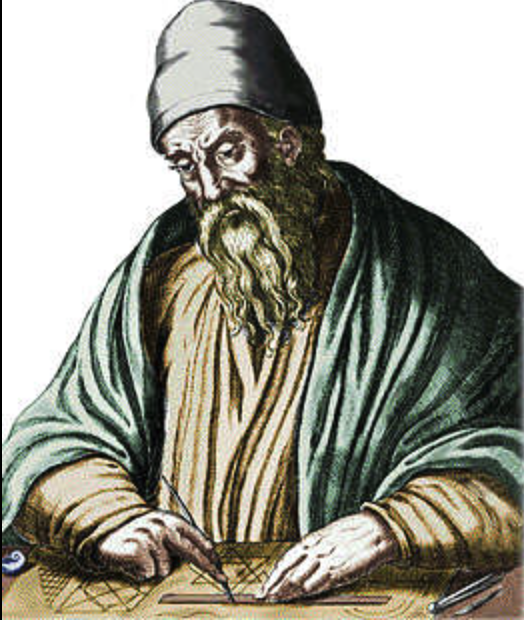.. Welcome in the year 300 bc for time-passengers ..
Euclid approx 300 bc;
Euclid was an ancient Greek mathematician, also known as the "Father of Geometry." He taught in Alexandria, (today city in Egypt), at that time ruled by the Macedonian king Ptolemy I Soter, king of Egypt. Euclid defined fundamental axioms and definitions, providing a systematic approach to number theory and geometry.
Euclids algorithm applied to real polynomials .. let be p1, p2 polynomials; Function rpd = real polynomial division
example 1:
while[0 < count p2;
rs:rpd[p1;p2];
if[0 < lrslen:count lrs:last rs;
r:lrs;
p1:p2;p2:r;
rem,:enlist p1;
]; ...
function rpd ..
while[(count p1)>=p2cnt;
factors,:first r:aux21[p1;p2];
p1:last r;
];
function aux21
mult:((*)p11)%(*)p21
R:((p2cnt#p1)-mult*p2),p2cnt _ p1
common divisor between 20x4+99x3-5x2-130x-76 and
4x3+131x2-1820x-11172
-->rs:rpd[p1;p2];
if[0 < lrslen:count lrs:last rs;
r:lrs;
p1:p2;p2:r;
rem,:enlist p1;
]; ...
function rpd ..
while[(count p1)>=p2cnt;
factors,:first r:aux21[p1;p2];
p1:last r;
];
function aux21
mult:((*)p11)%(*)p21
R:((p2cnt#p1)-mult*p2),p2cnt _ p1
ggt[20 99 -5 -130 -76;4 131 -1820 -11172];
20 99 -5 -130 -76f
4 131 -1820 -11172f
27304 -197250 -1552984f
-437.3604 -2077.462 --> at the end a list of length 2 --> we found a real divisor which is linear. The divisor is unique (except from a linear factor) ... if we divide -437.3604x -2077.462 by -109.3401 then we get a much nicer result: 4 19 --> 4x+19
example 2:
p(x) = 96x3 + 832x2 + 1406x - 1805
p'(x) = 288x2 + 1664x + 1406
p:96 832 1406 -1805
Then
ggt[p;-1_p*(-1+cp)-til cp:count p]
returns: -665.037 -3158.926 (list of length 2 --> p(x) has a 2-fold root)
Go back to startpage